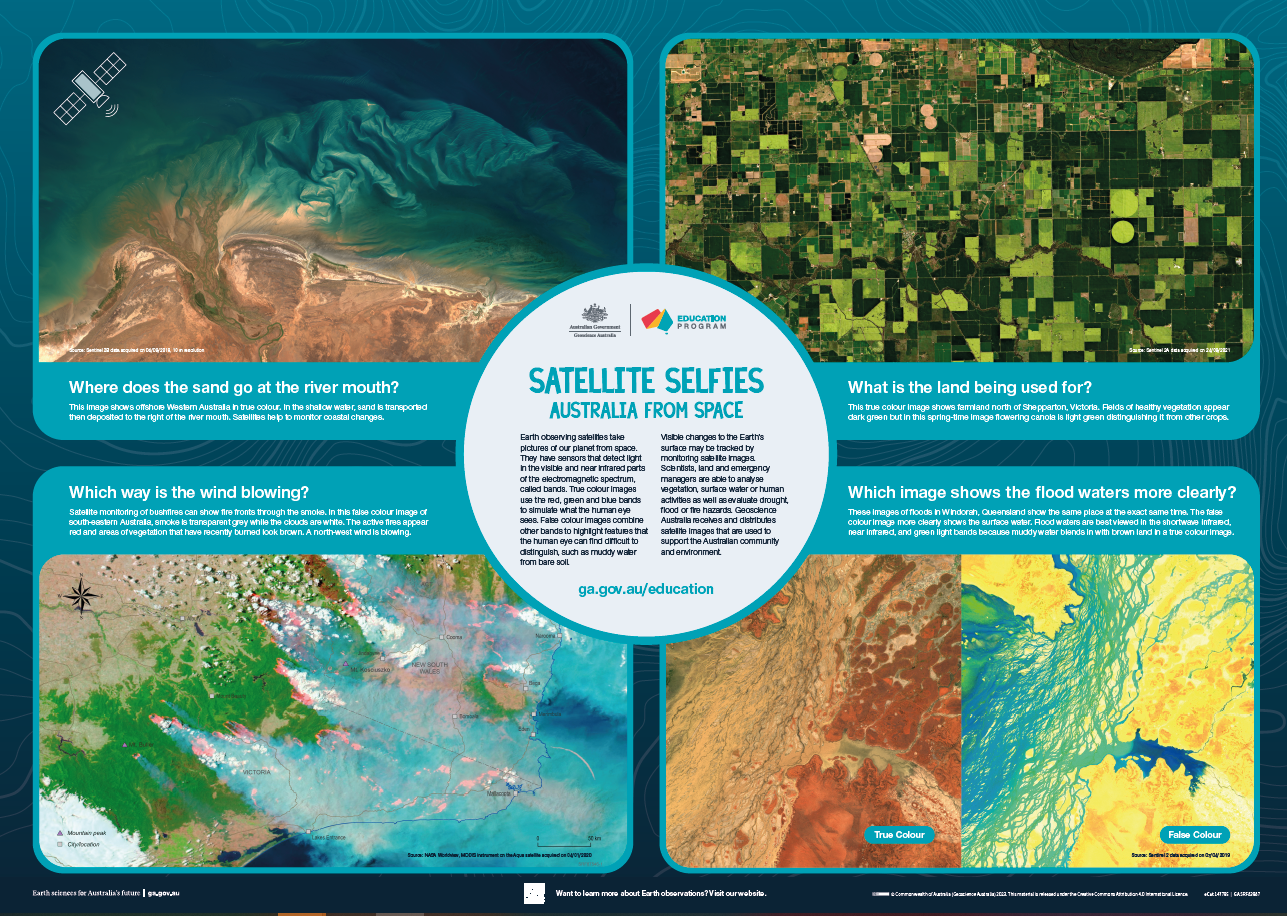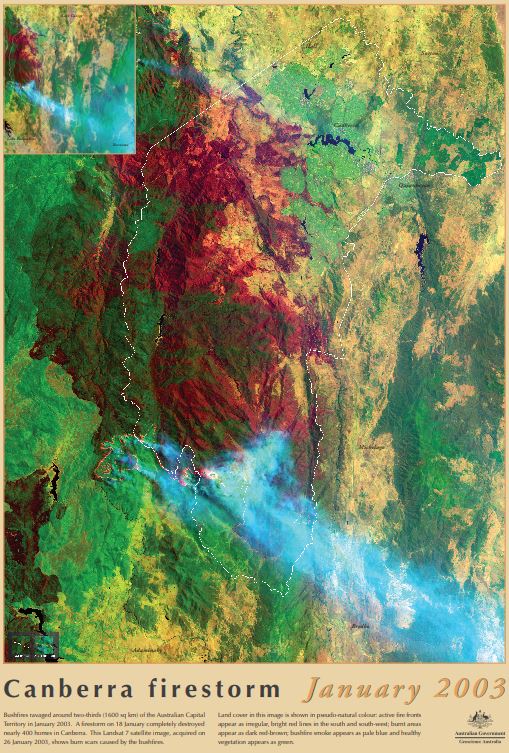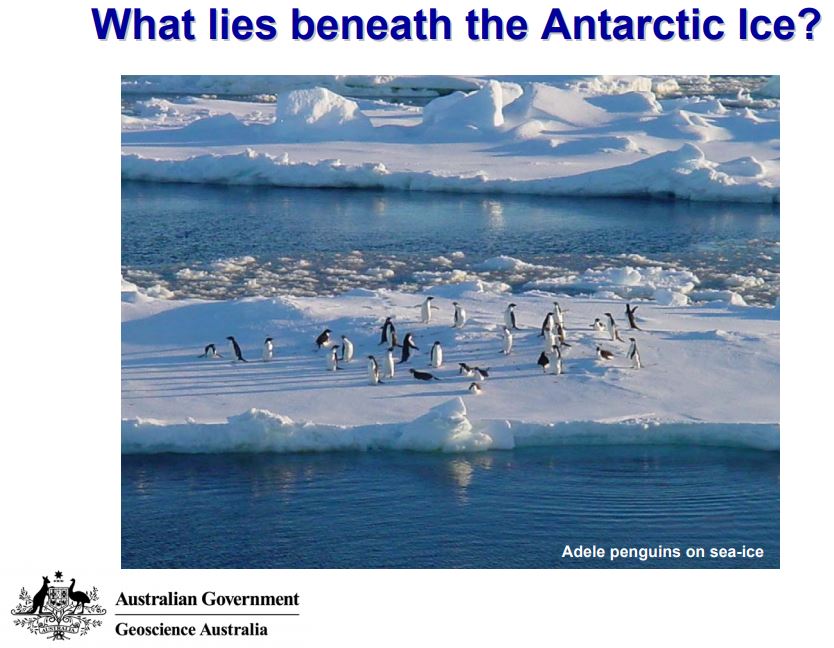Educational Product
Type of resources
Keywords
Publication year
Scale
Topics
-
<div>The A1 poster incorporates 4 images of Australia taken from space by Earth observing satellites. The accompanying text briefly introduces sensors and the bands within the electromagnetic spectrum. The images include examples of both true and false colour and the diverse range of applications of satellite images such as tracking visible changes to the Earth’s surface like crop growth, bushfires, coastal changes and floods. Scientists, land and emergency managers use satellite images to analyse vegetation, surface water or human activities as well as evaluate natural hazards.</div>
-
Bushfires ravaged around two-thirds of the Australian Capital Territory in January 2003. A firestorm on 18 January completely destroyed nearly 400 homes in Canberra. This Landsat 7 satellite image, acquired on 26 January 2003, shows burn scars caused by the bushfires. Land cover in this image is shown in pseudo-natural colour: active fire fronts appear as irregular, bright red lines in the south and south-west; burnt areas appear as dark red-brown; bushfire smoke appears as pale blue and healthy vegetation appears as green.
-
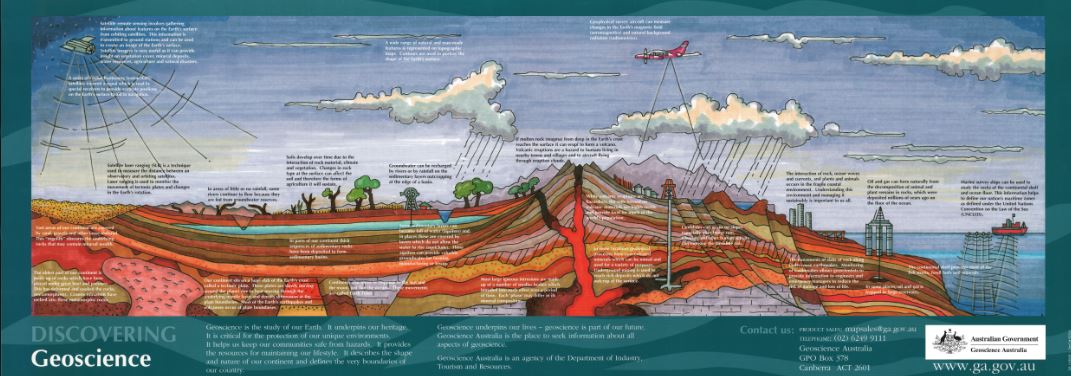
Educational poster with stylised background drawing showing a theoretical geological cross section from the ocean, through a mountain range to inland basin of Australia. The drawing includes human use of the geology for oil and gas and groundwater. Text boxes superimposed on the colour drawing provide information about the geology of Australia and exploration techniques. Text at the bottom of the poster introduces the idea that Geoscience underpins our lives. This on-line version is a scan of the printed version of the poster (2002). Dimensions of printed version 83cm x 30cm. Original author: Gary Lewis (AGSO)
-
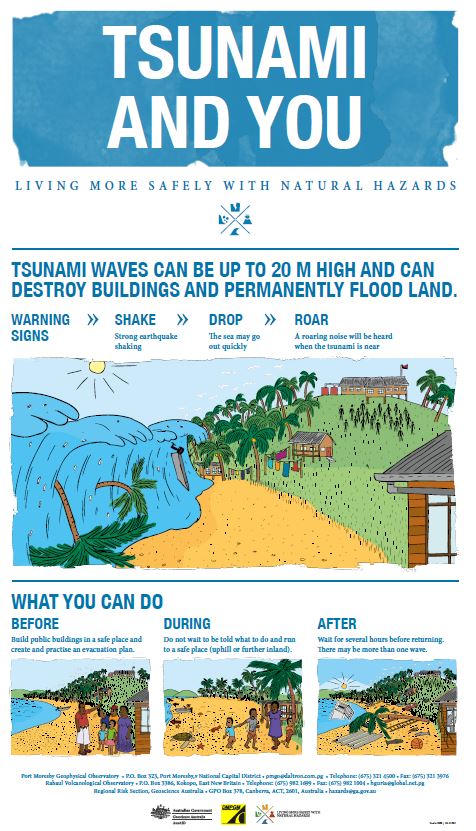
Educational booklet series on the hazards of East New Britain, Papua New Guinea: tsunamis, earthquakes & volcanoes
-
This advanced earthquake location and magnitude classroom activity is based on real data from the 2004 earthquake off Banda Aceh on the Indonesian Island of Sumatra. Extension exercises and teacher answer provided.
-
Amateur seismology in Australia fact sheet
-
During the summer of 2003-2004, six scientists and technicians spent over a month camped on the Amery Ice Shelf in eastern Antarctica. The aim of their stay was to drill through several hundreds of metres of ice beneath their feet to reach the ocean cavity below. Through this drill hole they were then able to lower instruments through the ice shelf, to study a part of the ocean which never sees the light of day. This activity explores what they found and enables students to use real data to establish what really does lie beneath the ice. Teacher answers provided.
-
Onshore Energy and Minerals Division Open Day Word Game Find the hidden answer to the question following: What are OEMD looking for? 1. What does 'O' in OEMD stand for? 2. What is one type of scientist that works at GA? 3. What type of energy comes from hot rocks? 4. What are the oldest rocks on the Australian continent? 5. Name one type of mineral ore found in Australia 6. What is one type of uranium system? (___________ Uranium.) 7. What does the 'm' in AEM stand for? 8. What type of electronic positioning device does a geologist use in the field? 9. Name a type of ore from WA? (______ Ore) 10. Name a tool that looks a bit like a hammer that a geologist uses in the field? 11. What energy resources can Radiometrics be used to map? 12. The Gravity Anomaly Map covers all of 13. What GIS tool is available on the GA website? 14. Vibrations are used in what kind of geo-scientific survey?
-
Australia's Maritime Jurisdiction themed addition to GAV placemat series commissioned by Communications & Governance Section for educational purposes. Not for sale or general release.
-
Crystals are truly fascinating. Crystals are found almost anywhere - in the classroom,kitchen, bathroom, and in nature, in the rocks beneath your feet. Some people are impressed by their shapes, colours and natural beauty. Others are intrigued with theirchemical structure and study the science of Crystallography. Other people believe that crystals have "powers" and can influence moods. This booklet will help you and your students understand the science of crystals - explore the facts, and dispel the myths.

